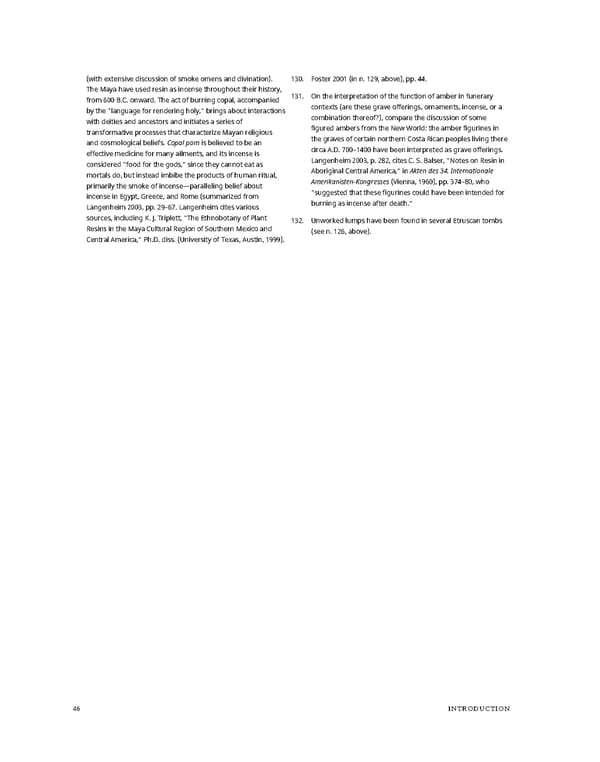(with extensive discussion of smoke omens and divination). 130. Foster 2001 (in n. 129, above), pp. 44. The Maya have used resin as incense throughout their history, 131. On the interpretation of the function of amber in funerary from 600 B.C. onward. The act of burning copal, accompanied contexts (are these grave offerings, ornaments, incense, or a by the “language for rendering holy,” brings about interactions combination thereof?), compare the discussion of some with deities and ancestors and initiates a series of figured ambers from the New World: the amber figurines in transformative processes that characterize Mayan religious the graves of certain northern Costa Rican peoples living there and cosmological beliefs. Copal pom is believed to be an circa A.D. 700–1400 have been interpreted as grave offerings. effective medicine for many ailments, and its incense is Langenheim 2003, p. 282, cites C. S. Balser, “Notes on Resin in considered “food for the gods,” since they cannot eat as Aboriginal Central America,” in Akten des 34. Internationale mortals do, but instead imbibe the products of human ritual, Amerikanisten-Kongresses (Vienna, 1960), pp. 374–80, who primarily the smoke of incense—paralleling belief about “suggested that these figurines could have been intended for incense in Egypt, Greece, and Rome (summarized from burning as incense after death.” Langenheim 2003, pp. 29–67. Langenheim cites various sources, including K. J. Triplett, “The Ethnobotany of Plant 132. Unworked lumps have been found in several Etruscan tombs Resins in the Maya Cultural Region of Southern Mexico and (see n. 126, above). Central America,” Ph.D. diss. (University of Texas, Austin, 1999). 46 INTRODUCTION
 Ancient Carved Ambers in the J. Paul Getty Museum Page 55 Page 57
Ancient Carved Ambers in the J. Paul Getty Museum Page 55 Page 57